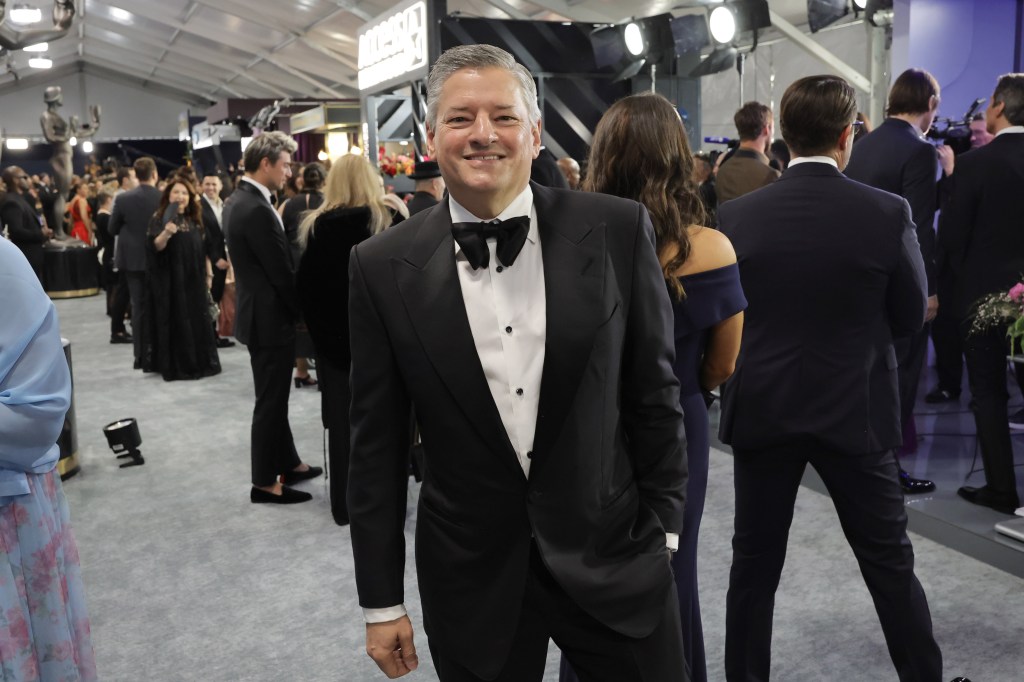Addressing the potential threat to Netflix posed by generative video models like OpenAI’s Sora 2, Netflix Co-CEO Ted Sarandos said it is more likely to pull audiences away from user-generated video.
Professionally produced series and films, as well as other works of art, will remain the province of human creativity, Sarandos maintained during the company’s third-quarter earnings interview.
“AI content replacing viewing of existing user-generated content, that starts to make sense,” he said. At the same time, he added, “It takes a great artist to make something great. Writing and making shows and films well is a rare commodity, and it’s only done successfully by very few people. So, AI can give creatives better tools to enhance their overall TV movie experience for our members. But it doesn’t automatically make you a great storyteller if you’re not.”
Music is a “leading indicator” of AI’s impact, in Sarandos’ view. “AI generated music has been around for a long time, and there’s a lot of it,” he said. “And it’s a pretty small part of total listening, and established artists like Taylor Swift continue to be more popular than ever. So even in a world filled with AI music, AI seems to be mostly a tool for musicians to take their sound in new directions.”
In its quarterly letter to shareholders, the company held forth on the ways that AI is going to, as Sarandos put it, “help us and help our creative partners tell stories better, faster, and in new ways.”
Hollywood has been on edge about Sora 2 given Open AI’s decision to initially force copyright holders to opt out of having their work used to train the model. Major talent agencies, unions and trade groups have voiced their objections and last week the estate of Martin Luther King Jr. reached an agreement with OpenAI to pause videos featuring King. Breaking Bad star Bryan Cranston said in a statement via SAG-AFTRA on Monday he was “deeply concerned” by videos featuring him spreading across Sora, but came to appreciate the guardrails OpenAI has begun to erect.
As Netflix embraces AI in some of its operations, Sarandos emphasized, “We’re not chasing novelty for novelty’s sake here, and we’re investing in what we believe delivers value for creators and members alike. So we’re not worried about AI replacing creativity, but we’re very excited about AI creating tools to help creativity.”
Most of the “Product + Innovation” section of the shareholder letter was taken up by paragraphs about AI, with the company expressing a strikingly optimistic outlook on its impact. In addition to production, the company said it uses AI and machine learning already to fine-tune its user interface, place relevant ads on shows across its subscriber footprint, localize promotional assets and improve other functions.
“Given our significant data assets and at-scale products and business processes, we are very well positioned to effectively leverage ongoing advances in AI,” the letter said. “We believe Generative AI presents a significant opportunity for us to deliver benefits to our members, creators, and business.”
As Netflix and other major media and tech companies navigate through a period of anxiety about AI in the creative community, the shareholder letter declared the technology is “empowering” for creators. GenAI tools can “help them achieve their visions and deliver even more impactful titles for members,” the letter continued. “For example, in Happy Gilmore 2, filmmakers used GenAI coupled with ML and Eyeline’s proprietary volumetric capture technologies to de-age characters during the opening flashback scene. And the producers of Billionaires’ Bunker used various GenAI tools during pre-production, including for pre-visualization to explore wardrobe and set designs.”
Netflix recently issued guidelines for the use of AI in production, the letter recalled.
Co-CEO Greg Peters also weighed in on the topic during the earnings interview.
“Our thinking about AI hasn’t really changed over a decade and a half or more,” he said. “We’ve had a long history of developing machine learning and AI solutions. We’ve got a deep technology DNA. We’ve got significant data assets, scaled consumer products, scaled business processes – all of that, we think, enables us to have the opportunity to leverage new technical capabilities as they come online. And that’s our job. We are engaging proactively to do so.”
